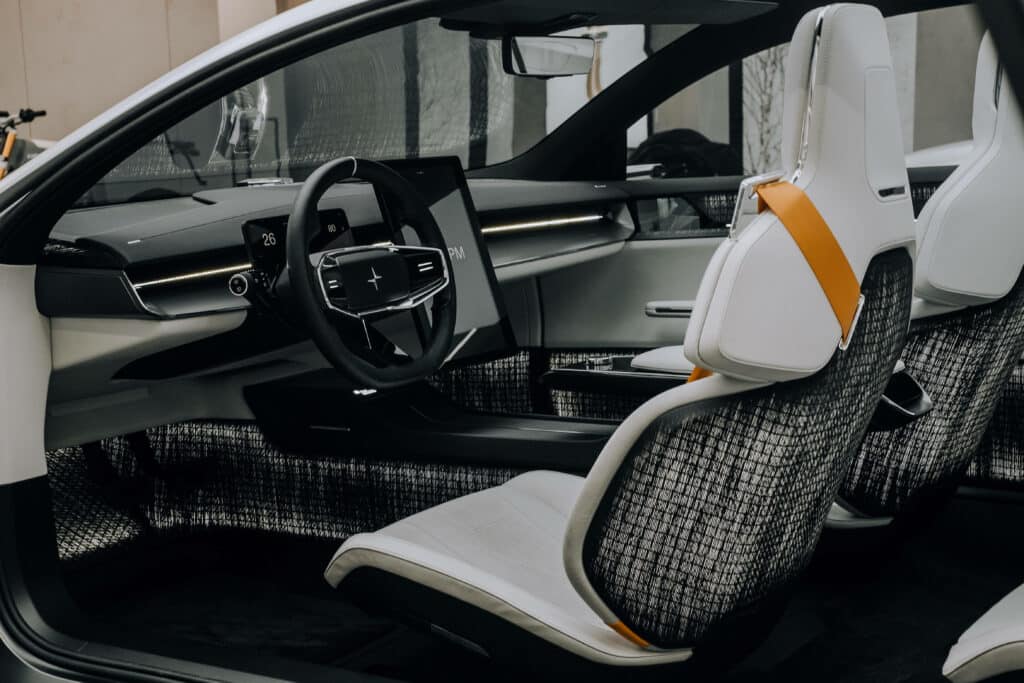Discover 14 trends that are shaping the future of auto insurance – and find out how to keep pace
The future of auto insurance is continually shifting, with new trends emerging that reflect societal shifts, technological advancements, and changing consumer demands. Some of these trends are slow-moving, and will give you time to adjust. Others are already here and moving fast.
Understanding these trends is pivotal to staying competitive in the marketplace for auto insurance agency owners. In this article, we delve into 14 prominent trends that are reshaping the future of auto insurance.
The future of auto insurance is arriving. Don’t miss your ride.
There’s no denying that Artificial intelligence (AI) and machine learning will play a significant role in the future of auto insurance. From claims processing to fraud detection, these technologies enable faster, more accurate decisions, elevating customer satisfaction and operational efficiency. AI & machine learning and help with sales and marketing tasks, too.
While there are other trends and technologies to watch, AI might be the most talked-about lately. That’s why we’re starting this list with several ways AI is, or soon will be, part of your insurance systems, then we’ll move on to other interesting technologies.
1. Predictive Analytics for Lead Scoring
By analyzing vast datasets, AI can identify which leads will most likely convert into sales. With predictive lead scoring, sales teams can prioritize high-value prospects, optimizing their efforts for better conversion rates.
2. Customer Retention Analysis
AI allows insurance companies to implement targeted retention strategies by predicting which customers are most likely to churn. This could involve personalized discount offers or tailored communication to address individual concerns.
3. Enhanced Customer Segmentation
AI can sift through vast amounts of data to identify specific customer segments based on behavior, preferences, risk profiles, and other criteria. Tailored marketing campaigns can then target these segments, ensuring higher relevancy and engagement.
4. Telematics-Based Policies
Telematics technology leverages devices installed in vehicles to monitor driving habits, allowing insurers to personalize rates based on actual driving behavior. This usage-based insurance (UBI) model attracts drivers seeking cost savings, especially those who drive less frequently or demonstrate safe driving practices.
5. Direct-to-Consumer Models
Many insurers are bypassing brokers and agents to sell policies directly to consumers. This direct-to-consumer model streamlines the purchasing process, potentially offering cost benefits to the consumer by eliminating middleman commissions.
6. Electrific and Autonomous Vehicles
The rise of electric and autonomous vehicles presents new challenges and opportunities for insurers. Policies must address unique aspects such as battery coverage for electric cars and liability determination in the event of autonomous vehicle mishaps.
7. Enhanced Customer Experience
Modern consumers expect seamless, digital-first experiences. Leading auto insurers are thus investing in digital platforms, mobile apps, and online portals to facilitate easy policy purchasing, claims processing, and customer service interactions.
8. Advanced Analytics for Risk Assessment
By harnessing the power of big data and advanced analytics, insurers can predict risks with greater accuracy. This translates to more tailored policy pricing, benefiting both insurers and policyholders.
9. Personalized Pricing Models
Gone are the days of one-size-fits-all pricing. Vehicle type, location, and the policyholder’s credit score can influence policy prices today. Dynamic pricing models consider these variables, providing a more individualized approach to policy creation.
10. Shift Towards Environmentally-Friendly Vehicles
As environmental consciousness grows, many drivers are transitioning to hybrid or fully electric vehicles. Insurers recognize this shift, offering specific policies or discounts for these eco-friendly vehicle owners.
11. Comprehensive Cybersecurity
With vehicles becoming increasingly connected, the threat of cyberattacks is real. Cybersecurity coverage within auto insurance policies is thus becoming more prevalent, ensuring that policyholders are protected against potential digital threats.
Cybersecurity coverage for automobiles might include:
- Unauthorized access coverage against damages or losses from unauthorized access to the vehicle’s electronic systems or data.
- Coverage for expenses and damages if the vehicle’s systems are infected by malware or ransomware, locks out the owner, demanding a ransom to regain access.
- Coverage against liability claims arising if a breach in the vehicle’s systems leads to unauthorized access to the vehicle owner’s or other parties’ data.
- Protection against damages or losses from unauthorized interference or tampering with the vehicle’s GPS or navigation systems.
12. On-Demand Insurance
Some insurers now offer on-demand insurance policies catering to a generation that values flexibility. These allow drivers to activate their coverage when driving and pause it when not, presenting a more flexible pricing model.
On-demand insurance appeals greatly to Millennials and Gen Z consumers who value flexibility, customization, and digital-first solutions. By offering on-demand insurance, agencies can capture a significant share of this lucrative demographic, enhancing their customer base.
While on-demand insurance provides flexibility, the unit price for short-term coverage can be higher than the average rate in traditional annual policies. This premium pricing model compensates for the transient nature of coverage.
13. Micro-Mobility and Alternative Transport Coverage
With the rise of e-scooters, bikes, and other forms of micro-mobility, there’s a growing need for specialized coverage. Progressive insurers are venturing into this space, offering tailored policies for these new modes of transport.
14. Greater Emphasis on Claims Prevention
Instead of just processing claims, forward-thinking insurers are focusing on prevention. They’re using technology to alert drivers of potential threats or providing resources on safe driving practices.
Brand new cars already include Advanced Driver Assistance Systems (ADAS), which features designed to enhance driver and vehicle safety. These include:
- Lane departure warnings: Alerting drivers when they’re unintentionally drifting out of their lane.
- Forward collision warnings: Providing alerts when a collision with a vehicle ahead is imminent.
- Automatic emergency braking: Engaging the brakes automatically if the driver doesn’t respond to collision warnings.
- Blind-spot detection: Alerting drivers about vehicles in blind spots during lane changes.
The auto insurance landscape is dynamic, with new trends emerging in response to technological, societal, and market forces. By staying abreast of these developments, auto insurance agencies can position themselves favorably, ensuring they meet the demands of today’s discerning consumers while navigating the future of auto insurance and the challenges of tomorrow’s market landscape.
Need leads? Our leads are pre-qualified, so all the hard prospecting work is done for you. Your team will be sending out more quotes in no time. So sign up for HBW Leads today!


